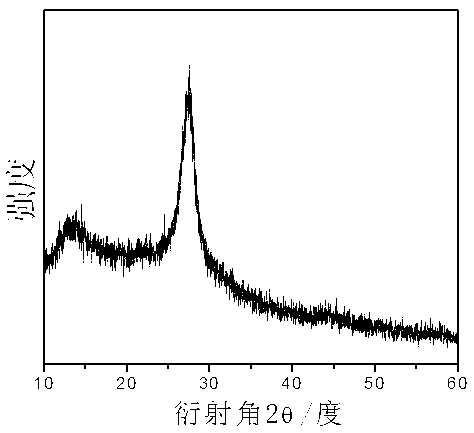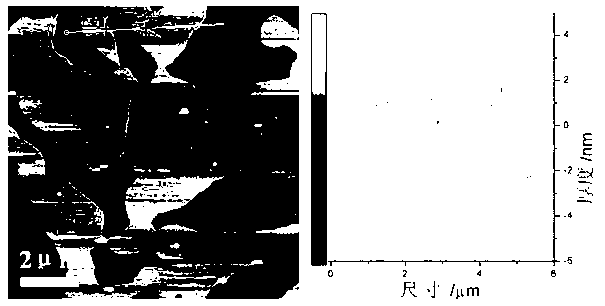Copolymerization modified graphite-phase carbon nitride nanosheet visible-light-driven photocatalyst
A graphitic carbon nitride, copolymerization technology, applied in the direction of organic compound/hydride/coordination complex catalyst, physical/chemical process catalyst, hydrogen production, etc., can solve the problem of ineffective use of sunlight and excitons The problems of high energy and large forbidden band width can achieve good controllability and universality, simple preparation process, and the effect of reducing the band gap width.
- Summary
- Abstract
- Description
- Claims
- Application Information
AI Technical Summary
Problems solved by technology
Method used
Image
Examples
Embodiment 1
[0021] Dissolve urea and barbituric acid with a mass ratio of 25:1 in water, stir at room temperature for 48 hours, evaporate to dryness, and grind. The solid powder was heat-treated at 450° C. for 10 h in a muffle furnace to prepare copolymerized modified graphitic carbon nitride nanosheets.
Embodiment 2
[0023] Dissolve urea and 2-aminobenzonitrile with a mass ratio of 100:1 in water, stir at room temperature for 24 hours, evaporate to dryness, and grind. The solid powder was heat-treated in a muffle furnace at 500° C. for 5 h to prepare copolymerized modified graphitic carbon nitride nanosheets.
Embodiment 3
[0025] Dissolve urea and 2-aminothiophene-3-carbonitrile with a mass ratio of 1000:1 in water, stir at room temperature for 12 hours, evaporate to dryness, and grind. The solid powder was heat-treated at 550° C. for 2 h in a muffle furnace to prepare copolymerized modified graphitic carbon nitride nanosheets.
PUM
 Login to View More
Login to View More Abstract
Description
Claims
Application Information
 Login to View More
Login to View More - R&D
- Intellectual Property
- Life Sciences
- Materials
- Tech Scout
- Unparalleled Data Quality
- Higher Quality Content
- 60% Fewer Hallucinations
Browse by: Latest US Patents, China's latest patents, Technical Efficacy Thesaurus, Application Domain, Technology Topic, Popular Technical Reports.
© 2025 PatSnap. All rights reserved.Legal|Privacy policy|Modern Slavery Act Transparency Statement|Sitemap|About US| Contact US: help@patsnap.com



